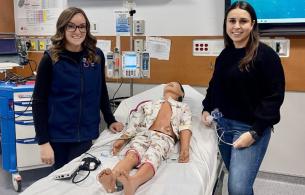It’s hard to believe that December is here already!
Many of us have had our attention laser focused on the COVID-19 pandemic and the overdose crisis that have rocked our worlds this year. This week is an opportunity to highlight World AIDS Day (Dec 1) and Aboriginal AIDS Awareness Week (Dec 1 - 5). In such a tumultuous time, let’s take a moment to reflect on some positive news related to HIV.
HIV is a treatable chronic condition
HIV is now considered a treatable chronic condition, not the death sentence many of us from previous generations learned about in high school. People living with HIV can live long, healthy, fulfilling lives by engaging in treatment. The treatments that we learned about that involved cocktails of multiple medications are now often just a single pill a day!
Antiretroviral therapy (ART) has never been as simple as it is today, and the benefits are enormous. Remaining on treatment, many people who have HIV are able to achieve an undetectable viral load. This means that the amount of virus in the body becomes so low that it is not detected by standard lab tests. This doesn’t mean that the person has been cured of HIV, but it does have positive effects on their health and reduces the risk of transmitting the virus to others.
The goal of treatment is U=U
Have you heard of U=U? It stands for Undetectable = Untransmittable. This means that when a person living with HIV takes their ARTs every day and maintains an undetectable viral load, they effectively have no risk of transmitting HIV sexually.
An undetectable viral load doesn’t prevent transmission or acquisition of other sexually transmitted infections (STIs), but it can transform the lives of people living with HIV and reduce the stigma around being HIV positive. U=U is a new concept for many of us, and the Public Health Agency of Canada has created materials for both health care providers and patients.
Prevention options are also available
For people who are HIV negative, but have a higher chance of contracting the virus, there’s been an amazing development, called PrEP. Pre-exposure prophylaxis (PrEP) is a simple pill, taken daily, that can reduce the risk of acquiring HIV through sexual activity by more than 90%. And it’s free because it’s covered by BC Health Insurance!
To find out more about accessing or prescribing PrEP, check out the BC Centre for Excellence’s PrEP page, which provides step-by-step instructions and all of the necessary forms. The BCCDC has created a user-friendly FAQ about PrEP for patients.
Though we have not yet won the battle against HIV, we’re making undeniable progress. Advances in research have brought us new information that will help prevent the spread of the virus and hopefully one day eliminate it all together. If you’d like to learn more about U=U, PrEP, or other factors related to HIV, NH’s Specialized Support Team for HIV and HCV is a fabulous team of clinicians ready to help providers across the region.














Comments